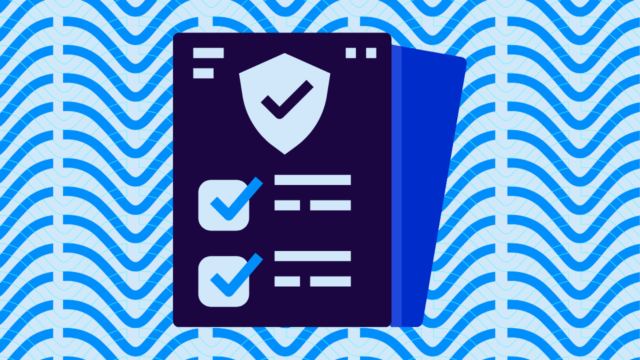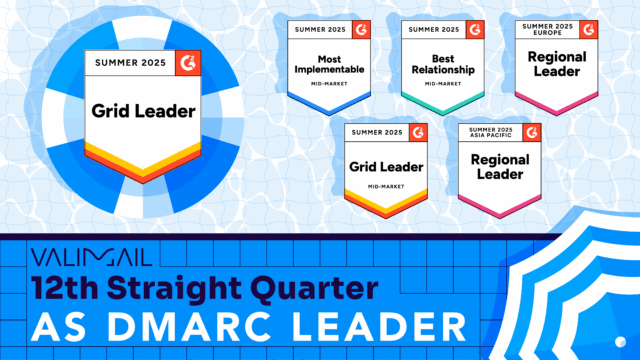One-click unsubscribe might not be the end-all-be-all cure to cleaning up inboxes, but it certainly helps accelerate the process. Fortunately, it’s soon to become a must-have requirement for senders messaging Gmail and Yahoo email recipients.
Have you ever stared at your overflowing inbox, drowning in a sea of promotional emails you never signed up for (or at least can’t remember signing up for)? Sorting it all out and cleaning things up can be harder than going through a month of mail, and often, the process feels like navigating a bureaucratic labyrinth.
It doesn’t need to be this way, and it shouldn’t.
One-click unsubscribe aims to streamline the process of reclaiming your inbox. Instead of clicking the half-hidden unsubscribe button at the bottom of the email and jumping through page after page to finally receive the freedom you deserve, one-click unsubscribe lets you do the same thing in (you guessed it) a single click all from the top of your email.
If you’re new to one-click unsubscribe, we’ve got you covered. We’ll walk you through everything you need to know to comply with sender requirements and guarantee a top-notch experience for your subscribers.
What is one-click unsubscribe?
One-click unsubscribe is a user-friendly feature embedded directly within the email interface that lets subscribers instantly opt out of mailing lists with a single click. No more hunting for hidden links, no more secondary confirmation pages—just point, click, and poof. You’re unsubscribed.

Traditionally, unsubscribing from a newsletter or promotional email could be a major headache. You’d scroll to the bottom, find the tiny unsubscribe link, click it, and then navigate through a series of pages or questions—sometimes even having to re-enter your email address—just to confirm your decision.
This feature isn’t just about convenience. It’s a much-needed paradigm shift in email communication where companies (big and small) respect the recipient’s time and inbox space rather than trapping them in unwanted contact.
One-click unsubscribe empowers users by simplifying the process, giving them greater control over what lands in their inbox. And here’s why that matters.
Why is one-click unsubscribe important?
Email is more than just a communication channel—it’s an online identity. It’s where people receive important transactional and marketing messages, and it also serves as a login to your users’ most precious websites, social media networks, and applications.
With that importance comes a desire for control, and that’s what inbox recipients deserve. With great power comes great responsibility, and when you have an email address (and permission to message it), you have an obligation to do the right thing—and that’s to use one-click unsubscribe.
Here’s why:
- User Empowerment: One-click unsubscribe respects your user’s time and decisions and shows you care. It eliminates the frustrating treasure hunt for the unsubscribe link and the often tedious, multi-step process that follows.
- Improved Email Hygiene: When your recipients better clean up their inboxes, they’re better able to find the emails they actually want—and, hopefully, those are your messages.
- Compliance with Regulations: Laws like CAN-SPAM in the United States and GDPR in Europe mandate that opting out of email communications should be straightforward.
- Fewer Spam Complaints: When subscribers can’t find the unsubscribe button, they turn to the next best thing: the mark as spam button. One-click unsubscribes lets users opt out of your messages with a single click, and that’s even faster than marking a message as spam.
- More Engaged Subscribers: When unsubscribing is easy, those who stay are more likely to be genuinely interested in your content. This leads to a more engaged, responsive, and valuable audience for your email campaigns.
Google and Yahoo’s new sender requirements
February 2024 marks a historic turning point for email marketing. Google and Yahoo have announced new sender requirements, and businesses will need to become (and remain) compliant if they want to keep sending emails to Gmail and Yahoo inbox recipients.
While the new sending requirements cover a range of guidelines, a significant part of the change specifically targets unsubscribed:
“If you send more than 5,000 messages per day, your marketing and subscribed messages must support one-click unsubscribe.”
Google
While all senders must comply with the new email-sending practices by February 2024, senders have until June 2024 to implement one-click unsubscribe for all commercial and promotional messages.

Note: The one-click unsubscribe requirement doesn’t affect transactional messages (such as password resets, receipts, and confirmation emails).
Going beyond the mandate
One-click unsubscribe might just become a requirement now, but it’s always been a recommended best practice. That’s because following email guidelines isn’t about avoiding fines and penalties—it’s about building trust and fostering deeper connections with your audience.
One-click unsubscribe pushes us towards permission-based marketing, where genuine interest replaces forced engagement. Imagine that—people actually receiving the emails they want to receive.
Ultimately, that’s what differentiates email from other communication and marketing channels—it’s an opt-in-only form of messaging. Your audience has requested to hear from you when they subscribed to your email marketing campaigns or newsletters. However, they don’t request those television or radio ads, promoted posts on social media, or pay-per-click (PPC) ads all across the internet.
And just as they can request to receive messages from you, they can demand it to stop—and it should be easier than bouncing through would-be deterrents (that only make you more sure of your decision) to finally reach that unsubscribe page.
5 best practices for implementing one-click unsubscribe
There are good, better, and best ways to implement one-click unsubscribe. At a bare minimum, there’s just staying compliant. That’s important, but there are additional best practices you can follow to retain relationships, gain valuable insights, and improve your email strategies.
Remember that RFC 8058 should be your guiding post when getting compliant with Gmail and Yahoo’s new rules. This protocol says that when a sender inserts specifically crafted headers in a message, it signals to the mail client that the recipient can unsubscribe with just one click.
1. Implement it sooner rather than later.
While compliance with the one-click unsubscribe feature isn’t mandated until June 2024, there are benefits to being an early adopter. For starters, it’s a subscriber-centric thing to do (and that should be reason enough).
Implementing one-click unsubscribe before the compliance deadline sets you apart as a forward-thinking and user-centric brand. It demonstrates to your subscribers that you value their experience and convenience—not just ticking off a regulatory checkbox.
Plus, it gives you time to work out any kinks or bugs that might unexpectedly pop up.
2. Keep the unsubscribe option in the footer.
The one-click unsubscribe feature is a game-changer, but it shouldn’t eliminate the traditional unsubscribe link typically found in the email footer. Many users are accustomed to finding the unsubscribe option at the bottom of an email. It’s been a standard practice for years. Keeping this option maintains a sense of familiarity and comfort for users who prefer the traditional way.
Having an unsubscribe link in the footer serves as a backup. In the rare event that the one-click option encounters technical issues, users can still opt-out. This redundancy ensures that you always provide an unsubscribe avenue, aligning with user expectations and compliance requirements.
3. Link to a preference center.
Piggybacking off the previous best practice, your unsubscribe link in the footer can lead users to a preference center. Here, they should have an opportunity to tailor their preferences instead of just a blanket unsubscribe from everything (that’s what the one-click unsubscribe is for).
A preference center allows users to customize their email interactions with your brand. Instead of a binary choice between ‘subscribe’ and ‘unsubscribe,’ they can adjust:
- Messaging frequency
- Topics of interest
- Email formats
- Personalization preferences
- Pause dates
4. Use your unsubscribe data.
Your unsubscribe data can reveal a lot about your email campaigns and uncover opportunities for improvement.
Keep a close eye on when and why people are unsubscribing. Are there spikes after certain types of emails or during specific times of the year? This analysis can reveal patterns that might be influencing your unsubscribe rates.
Unsubscribe data can be a window into your audience’s interests. If specific content themes consistently lead to higher unsubscribe rates, it might be time to reconsider that content or target it to a more specific segment of your audience. Conversely, content with low unsubscribe rates can be a sign to double down on those topics or styles.
Sometimes, a high unsubscribe rate isn’t about the content at all, but technical issues like poor formatting, broken links, or display problems on mobile devices. Pay attention to any technical feedback from the unsubscribe process to ensure your emails are as accessible and user-friendly as possible.
5. Ask for feedback.
Solicit feedback during the unsubscribe process to turn a potential end-of-the-line into an insightful dialogue with your subscribers. First, make feedback optional—requiring it prolongs the unsubscription process and can further aggravate your departing subscribers. Don’t do it.
Make the feedback process quick and easy. Consider using a multiple-choice question or a simple comment box to learn what your subscribers liked and didn’t like.
Become compliant, stay compliant
One-click unsubscribe is just one part of a bigger movement towards better digital experiences. These changes are meant to ensure that users actually get the mail they want delivered, including yours! Compared to some of the other compliance requirements, one-click unsubscribe is one of the easier features to implement.
While you can work with your email service provider (ESP) to get compliant with your one-click unsubscribe, Valimail has an “easy button” for some of the more technical requirements.
Valimail Align can help you meet Google and Yahoo compliance by achieving an aligned DMARC pass and setting up a policy of p=none. It also offers insights into which requirements you’re meeting and which ones you still need to meet.
Align offers:
- Guided workflows that accelerate compliance
- One-click resolution of alignment issues
- Lightning-fast authentication ensures precise email defense
Check your compliance status and learn where you need to make changes before April.



